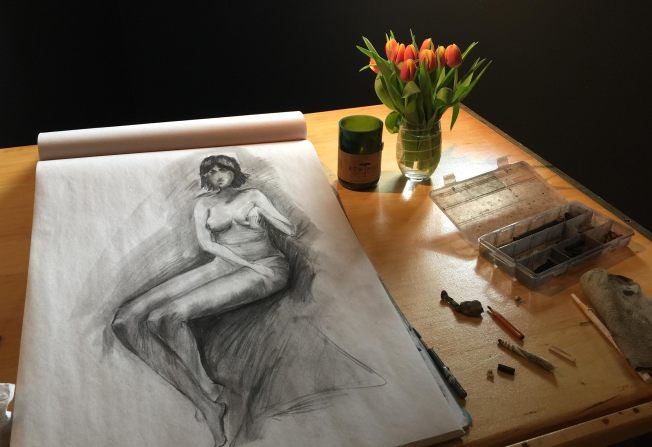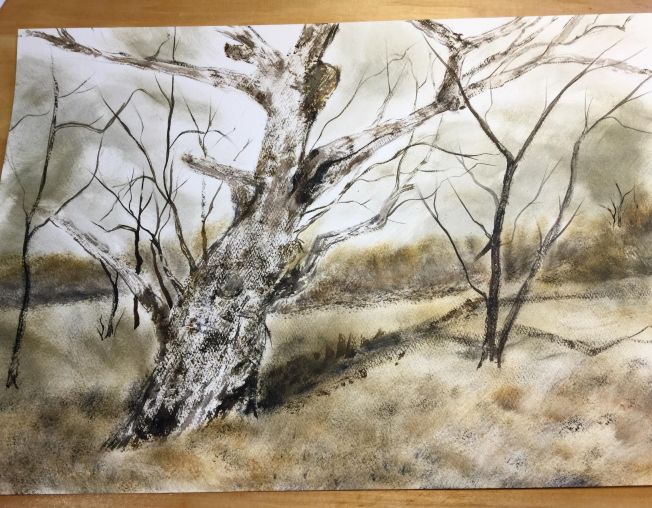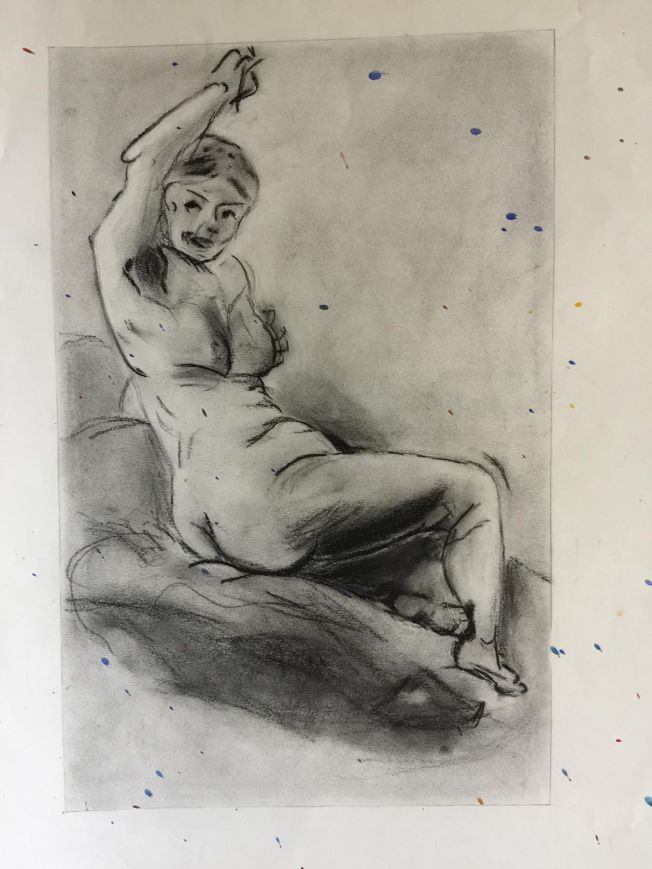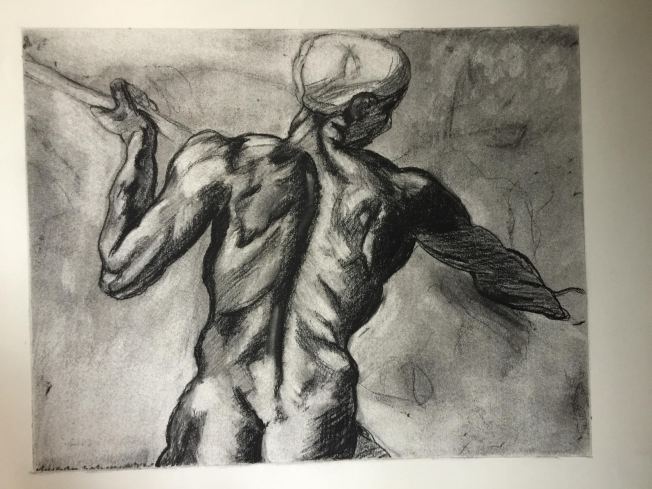
A copy from Henry Yan’s book Figure Drawing
The best teachers are also students, and a great student will share what they learn and teach along the way.
That will be my focus as March turns to April. Women’s History Month was a lot of fun; I loved learning more about the women who made art history, and their struggles and triumphs inspired me. It made me think about the importance of giving 200%, and what is possible when you set your sights just a bit higher.

A copy of an Andrew Wyeth dry brush painting. Doing this study taught me a lot. I think I’ll do more. It was my first attempt at dry brush.
It also got me thinking about sharing art and teaching. The journey of an artist doesn’t seem to have as much meaning unless you’re growing and sharing along the way.

Le sigh! This book is a must for lovers of landscapes and Turner.
Art books are a personal passion. One of my all time favorites is J.M.W. Turner’s “Painting Set Free.” I could turn its pages endlessly, looking at the way he truly did set painting free in the last fifteen years of his life. For many masters it is the same: In their later years, their art gets looser and freer. The Impressionists are another example of this. Personally, I think this freedom comes from a place of mastery. When you know your craft so well you can seemingly do it in your sleep. When you have so much muscle memory built up from years of honing your skills, then you have great freedom. So it is that I want to be an abstract painter when I grow up, so I’m returning again to the classical world.

A living master: Henry Yan’s “Figure Drawing” is an incredible teacher and amazing to turn the pages of.
In mid-April, I’ll be heading back to Florence and Tuscany to study from a more classical form. To prepare myself, I’m copying from the masters. Copying? Yes, of course, it is part of any classical training. It is imperative that you say you are copying, and never claim the idea as your own, but copying is learning in the art world. If you go into any of the world’s great museums, you will often find artists copying from the masters. And that is how so many of the masters started their own education. Turner spent time in the National Gallery copying from those who went before him, and so it goes.
You learn from going where those before you went. I’m studying from life as well, attending live sessions with models, as I will be studying from life in Italy. I am preparing to be a good student, and the best way to learn is to teach, so I hope you come along with me on this month of discovery. I plan to be on posting a lot of information for you, so you can learn along with me. Because if I believe anything, it’s that art is for everyone!
What about you? What have you learned that you turned around and taught? I love hearing from you. The best conversations are on Facebook and Instagram, I hope to see you there!

A copy from Henry Yan’s book Figure Drawing



